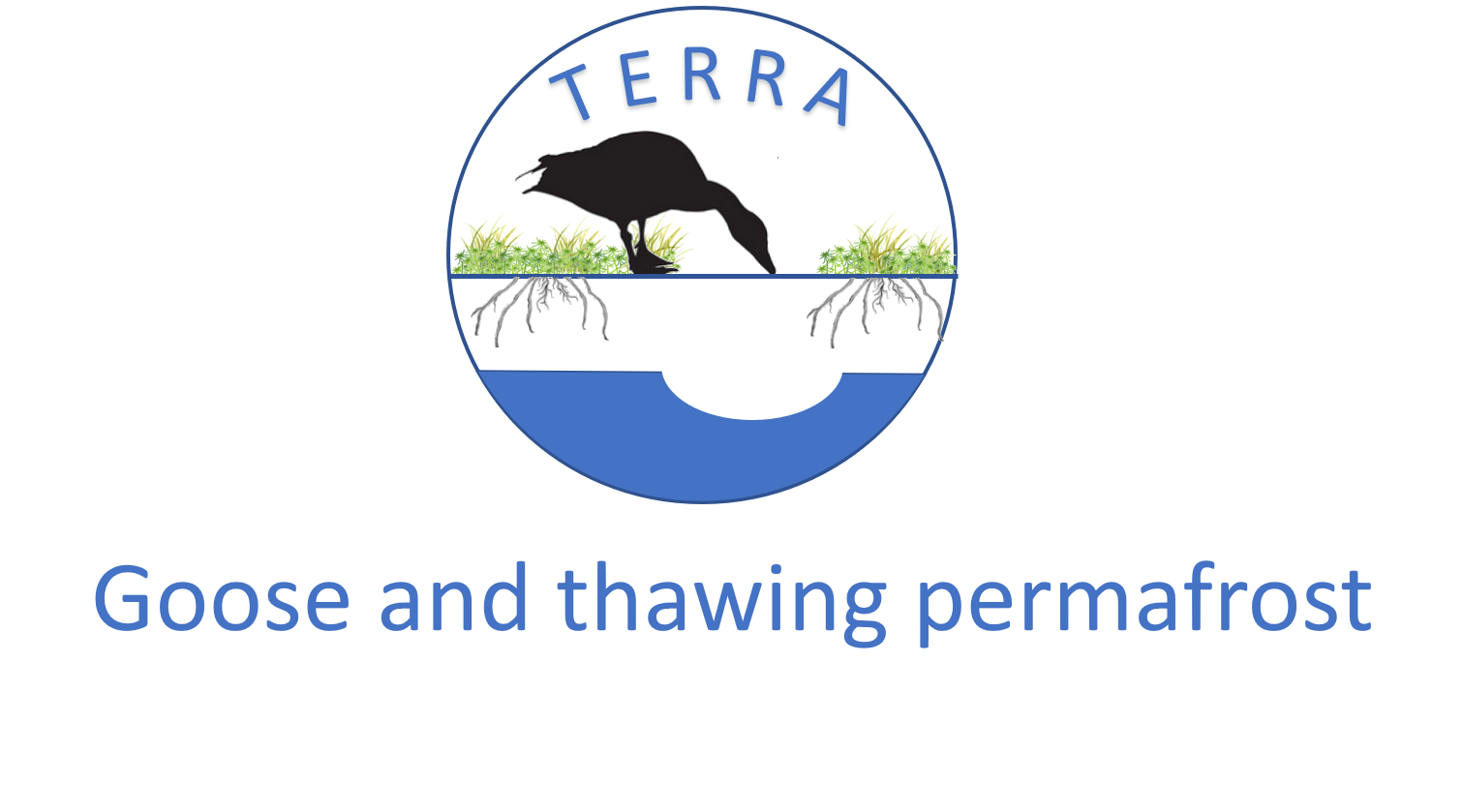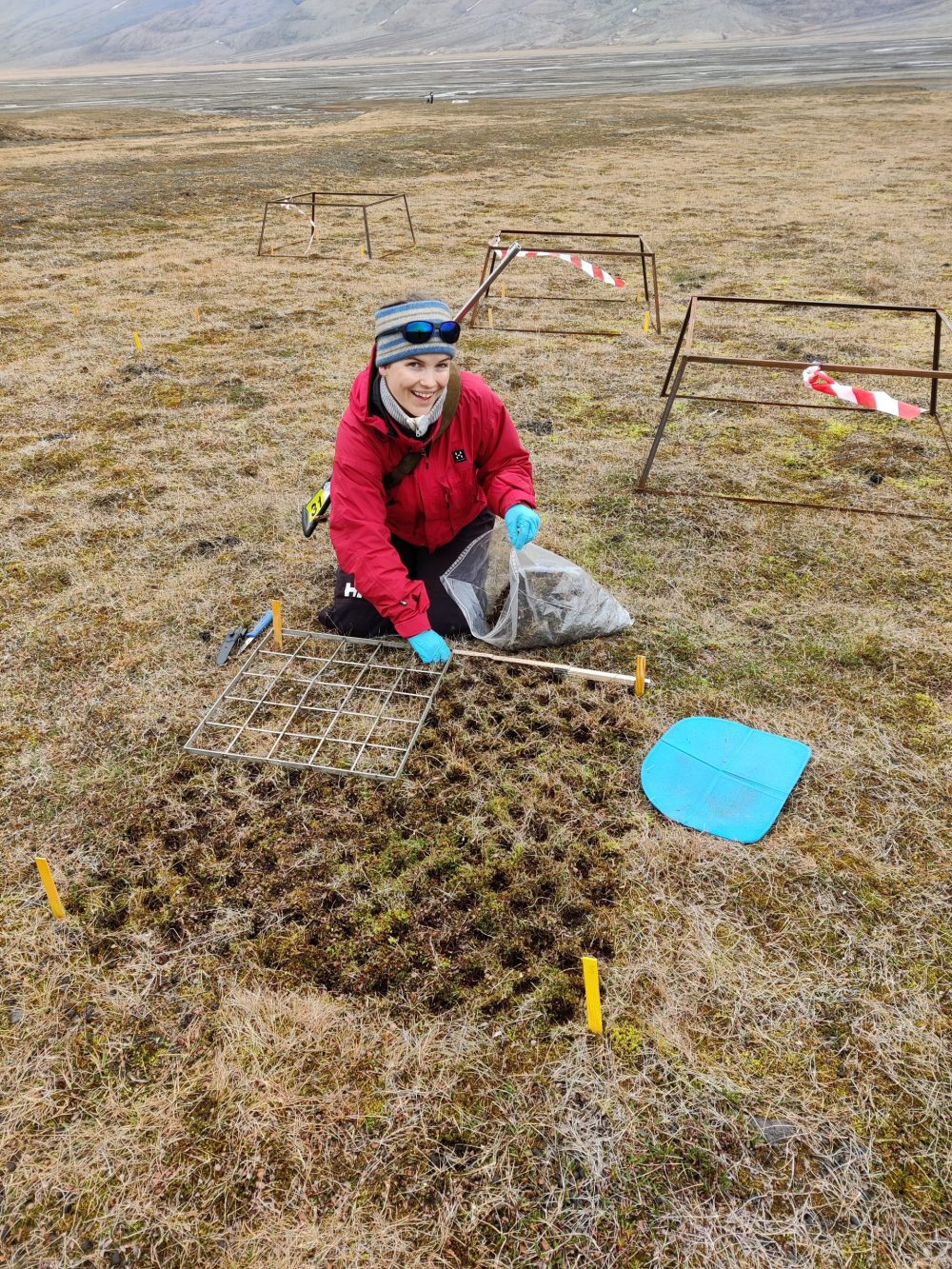Hi,
Welcome to this blog about the TERRA project and what it is like to do terrestrial research on Svalbard. My name is Emelie Winquist and I have moved up here from Finland in May 2022 to do a PhD in Arctic Terrestrial Biology.
During my first month on Svalbard the weather changed from cold snowy winter to arctic summer in only a few weeks. The temperatures rose from –10 to +10, and everyone was talking about the exceptionally high temperatures. I realized that I was witnessing the very thing I had read so much about during my studies in Climate Change.
Now when I am writing this post, it is the beginning of March, the month that should be one the coldest, and we just had plus degrees some weeks ago. Climate change is visible in our daily lives up here, and it is terrifying.
Svalbard is an incredibly beautiful, and isolated place. The mountains are amazing, and without any trees, you can see very far. The vegetation here is low growing and sparce, but the small flowers in the summer give so much colour to the otherwise greyish landscape. It teaches you to pay attention to the small changes. Talking about colours, the autumn colours here are amazing, and they turn whole valleys into a yellow and red colour. There is a word for this in Finnish, ruska, which describes this amazing autumnal event. Of course, the summer here is very short, and both the flowering and the ruska period is there for short, but very appreciated by both locals and tourists.
The wildlife on Svalbard is very different from anywhere I have ever been. During my fieldwork last summer, I was often surrounded by curious young wild reindeer, or Arctic skua`s coming to see if I was threatening their territory. I haven`t yet seen a polar bear, but there was a week in the autumn when I wasn't allowed to go out on fieldwork because there was a polar bear mom and her cub in the area around our research plots.
It was a big change to move to a small, isolated town from a capital city, but I have liked it very much. In a small town the pace of life is slower, since everything is so close, and the things you can do is limited. You can also make new friends more easily, because you run into the same people everywhere, and there is a lot of activities going on. I really can`t see myself living in a big town after living here.
I had a very quick move up to Svalbard, in only one month I gave up my apartment and the two jobs that I was working by the time and moved up. I had never been on Svalbard before moving up, which for many people was weird because most people that move up here have at least visited before. After the move, I quickly read up on the planned project and as soon as the snow melted, I started setting it up. The research plots had been chosen the year before, which helped a lot with the process of getting started. Open top chambers for simulation of warming and exclosures to keep the geese out were built. We simulated goose grubbing and installed temperature and soil moisture loggers in the plots. We did vegetation recording in the lower right corner of all plots, just to get an overview of what species we have, and when senescence hit, I collected a lot of leaves for my litter bag study. The leaves were put into mesh bags and dug down in the ground together with PRS plant root simulator probes. The first batch of litter bags will be taken up in the beginning of this summer, which is very exciting!
The time here has passed quickly, I cannot believe that I have been here a year soon, and that one third of my PhD has passed. It has been busy setting up the experiment, and I am so happy to now finally have time to start blogging and telling you more about my work and life here on Svalbard.

